#Atlas V rocket launch
Explore tagged Tumblr posts
Text

Thanks to Tony Rice of #WhatsUpInSpace for this update: Atlas V Rocket launch tonight ~7 PM EDT *could* be visible in the @WDEFNews12 viewing area three to four minutes after launch looking to the east. Some clouds could interfere here. Updates: https://www.ulalaunch.com/missions/next-launch/atlas-v-kuiper-1
#Atlas V rocket launch#Keep Looking Up#Science Rules#Backyard Astronomy#Chattanooga Astronomy#To The Sky#Astronomical Observation#Amateur Astronomy#Encouraging Astronomy
1 note
·
View note
Text

Atlas V launches USSF-51 at sunrise l John Kraus
#atlas v#ULA#space#astrophotography#astronomy#photography#rocket launch#planets#sky#stars#solar system#galaxy#universe#morning#sunrise
323 notes
·
View notes
Text

An Atlas V Rocket breaking through the clouds above NASA Kennedy Space Center.
#atlas v#sky clouds#clouds#cloud photography#sky photography#sky#astronomy#nasa#astronomers#universe#nasa photos#astrophotography#outer space#astrophysics#nasawebb#hubble space telescope#international space station#love & rockets#rocket launch#space science#space exploration#space#astronomy facts#nasa science#science facts#planetary science#science#planetary nebula#our universe#the universe
75 notes
·
View notes
Text


NASA’s Boeing Crew Flight Test Launch
"A United Launch Alliance Atlas V rocket with Boeing’s CST-100 Starliner spacecraft aboard launches from Space Launch Complex 41 at Cape Canaveral Space Force Station, Wednesday, June 5, 2024, in Florida. NASA’s Boeing Crew Flight Test is the first launch with astronauts of the Boeing CFT-100 spacecraft and United Launch Alliance Atlas V rocket to the International Space Station as part of the agency’s Commercial Crew Program. The flight test, which launched at 10:52 a.m. EDT, serves as an end-to-end demonstration of Boeing’s crew transportation system and will carry NASA astronauts Butch Wilmore and Suni Williams to and from the orbiting laboratory."
Photo Credit: NASA/Joel Kowsky
Date: June 5, 2024
NASA ID: NHQ202406050034, NHQ202406050035
#Boeing Crew Flight Test#Boe-CFT#Boeing Starliner#Starliner#CST-100#S3.2#Starliner Calypso#Calypso#Atlas V#N22#Rocket#NASA#Commercial Crew Program#CCP#LC-41#Cape Canaveral#Kennedy Space Center#KSC#Florida#Launch#June#2024#my post
65 notes
·
View notes
Text
youtube
I made a fun little short for this morning's Kuiper launch. Atlas has such a distinct launch profile I like it a lot. Esp with all them SRBs.
6 notes
·
View notes
Link
Welcome to Astronomy Daily! In this episode, host Anna takes you on an exhilarating journey through the latest in space and Astronomy news. Discover SpaceX's groundbreaking plans to land and recover its Starship rocket off the coast of Australia, delve into NASA's fascinating findings from the DART mission on near-Earth asteroids, and get the scoop on the United Launch Alliance's successful mission for the US Space Force. Plus, learn about the upcoming repair mission for NASA's NICER X-ray telescope aboard the International Space Station. Tune in for these stories and more as we explore the cosmos together! For more visit our website at www.astronomydaily.io www.bitesz.com
#alliance#asteroids#atlas#australia#dart#force#launch#mission#nasa#near-earth#nicer#rocket#space#spacex#starship#telescope#united#us#v#vulcan
0 notes
Text

Graham Smith
"Cape Canaveral Space Force Station, Fl ~
The latest launch of the aging Atlas V Centaur rockets was awe inspiring. At 7:01, the ignition was switched on and the 5 SRB's (solid Rocket Boosters kicked in at ignition to get the Amazon Kuiper communications satellites into orbit. These satellites will rival the Starlink satellites of SpaceX.
To date this was the heaviest launch ever for the Atlas of which there are about 15 more flights before the history books close forever on the Atlas Centaur.
Orange Flames are the main engines burning Liquid Oxygen & a special purified kerosene. White flames are from the solid rocket paste used in the SRBs
Nikon D-500 Nikon 105 mm Macro
1/8000, F/16, ISO 100 Clear glass filter (only) NO ND filters"
42 notes
·
View notes
Text
Second Time's a Charm...
After being away for the first launch of Amazon's Project Kuiper, we got to catch the second launch of the Atlas V rocket for ULA's Centaur this morning.


GO ATLAS! GO CENTAUR! GO KUIPER!
(Made with InstaDan)
4 notes
·
View notes
Text
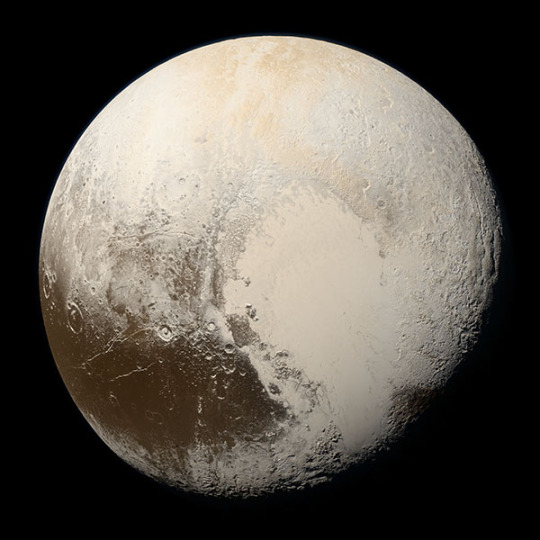
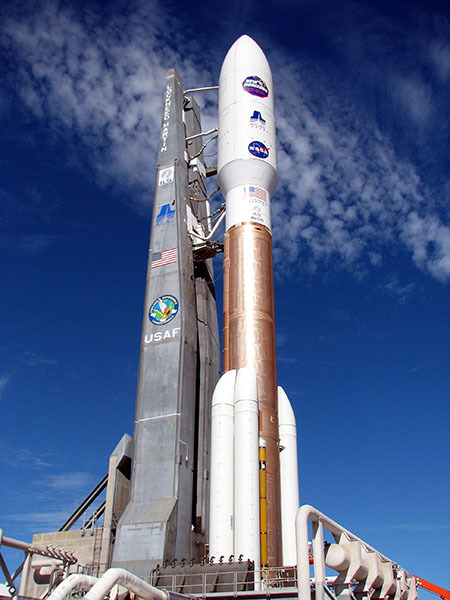
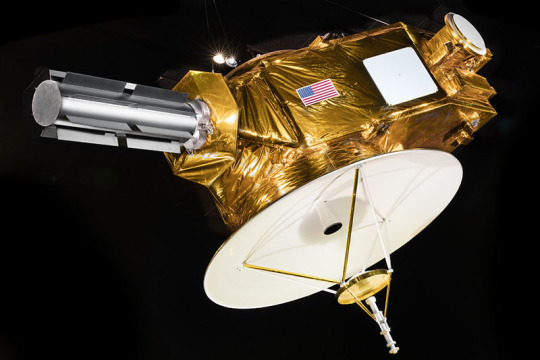
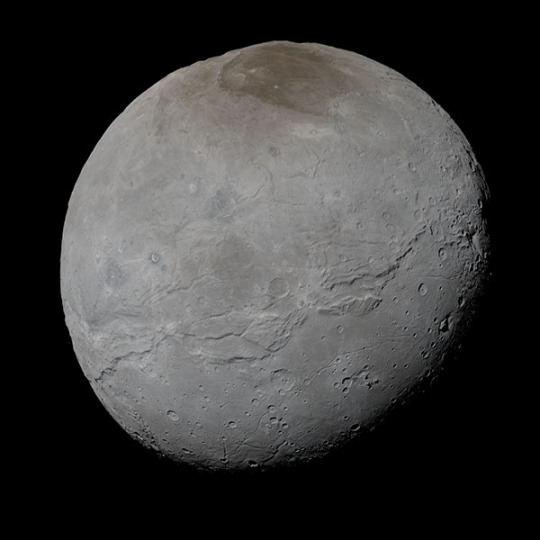
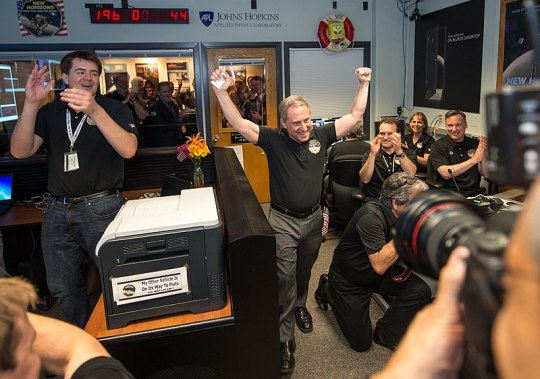

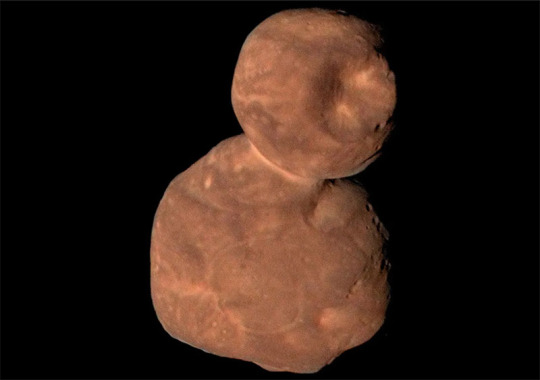
New Horizons – Scientist of the Day
The New Horizons spacecraft, bound for Pluto, blasted off its launch pad aboard an Atlas V rocket on Jan. 19, 2006.
read more...
#New Horizons#spacecraft#Alan Stern#histsci#histSTM#21st century#history of science#Ashworth#Scientist of the Day
21 notes
·
View notes
Text
NASA and Boeing were forced to stand down from an attempted launch to the International Space Station on Monday because of a last-minute issue that cropped up with a valve on the spacecraft’s rocket.
Boeing’s Starliner capsule had been scheduled to lift off at 10:34 p.m. ET from Florida’s Cape Canaveral Space Force Station on its first crewed test flight. NASA astronauts Barry “Butch” Wilmore and Sunita Williams were on board the capsule and strapped into their seats when the launch attempt was called off, roughly two hours ahead of the planned liftoff.
NASA announced early Tuesday that a second attempt would occur no earlier than Friday.
Mission controllers declared Monday’s launch “scrub” after an anomaly was detected on a valve on United Launch Alliance’s Atlas V rocket, which the Starliner capsule was to ride into orbit.
United Launch Alliance officials said in a post on X that the launch attempt was scrapped “out of an abundance of caution for the safety of the flight and pad crew,” adding that the team needs “additional time to complete a full assessment.”
The analysis will include whether the pressure regulation valve, located on the rocket’s upper stage, needs to be replaced, which may cause a longer delay.
The crewed Starliner flight, when it occurs, will be a crucial final test before NASA can authorize Boeing to conduct routine flights to and from the space station.
Officials at NASA and Boeing have said safety is paramount for the spacecraft’s first flight with humans onboard.
The scrubbed launch is yet another setback for Boeing, which has already dealt with years of delays and budget overruns with its Starliner program. It has fallen significantly behind SpaceX, which has been flying crewed missions to and from the space station for NASA since 2020.
Both SpaceX’s Crew Dragon capsule and Boeing’s Starliner craft were developed as part of NASA’s Commercial Crew Program. The initiative began more than a decade ago, following the retirement of the agency’s space shuttles, to support private companies in building new space vehicles to take astronauts to low-Earth orbit.
Starliner’s first uncrewed flight in 2019 was thwarted by software issues, forcing mission controllers to cut the test short before the vehicle could attempt to rendezvous and dock with the ISS. A second attempt was then delayed several times by fuel valve issues, and it wasn’t until 2022 that Boeing was able to carry out a successful uncrewed flight to and from the space station.
11 notes
·
View notes
Link
A United Launch Alliance Atlas V rocket sends two prototype satellites for Amazon’s Project Kuiper to orbit in 2023. The first operational Kuiper satellites are due for launch on a different Atlas V in early 2025. (ULA Photo) Get ready for Amazon’s Project Kuiper to pick up the pace in the megaconstellation space race. So far, SpaceX’s Starlink satellite megaconstellation has dominated the market for broadband connectivity from low Earth orbit. In the nearly 10 years since SpaceX founder Elon Musk unveiled the project in Seattle, the Starlink network has attracted more than 5 million subscribers and more than $2 billion in U.S. government contracts (including work on the Starshield national security network). But the year ahead promises to bring heightened competition: Like Starlink, Project Kuiper aims to offer high-speed internet access from the skies for hundreds of millions of people around the world who are currently underserved. Following up on last year’s successful test of two prototype satellites, Amazon plans to begin launching operational Kuiper satellites in early 2025, with service due to begin by the end of the year. Pricing details haven’t yet been announced, but Amazon says “affordability is a key principle of Project Kuiper.” Amazon’s satellites are being built at facilities in Kirkland and Redmond, Wash., with additional support facilities located in Everett, Wash., and at Kennedy Space Center in Florida. Under the terms of Amazon’s license from the Federal Communications Commission, at least half of Project Kuiper’s initial set of 3,232 satellites will have to go into orbit by mid-2026 — which will require an ambitious launch campaign. Next year’s milestone launch is due to use United Launch Alliance’s Atlas V rocket, but Amazon has also reserved rides on ULA’s Vulcan, Blue Origin’s New Glenn, Arianespace’s Ariane 6 and even SpaceX’s Falcon 9. Even as Amazon is gearing up on the technical side, it’s firming up its business plans as well. Project Kuiper’s strategic partners include Verizon in the U.S. and other telecom providers in South America, Japan, Europe and Africa. This month, officials in Taiwan said they were talking with Amazon about collaborating on Kuiper — a deal that could make the island’s communication systems more resilient in the face of potential threats from mainland China. In his most recent letter to shareholders, Amazon CEO Andy Jassy said that Kuiper will represent a “very large revenue opportunity” once it’s in service. Among the biggest opportunities are potential synergies with Amazon Web Services, which could use Kuiper to boost global connectivity through the cloud. Meanwhile, SpaceX isn’t standing still: Microsoft has incorporated Starlink connectivity into its Azure cloud computing ecosystem. In July, the Redmond-based software giant’s M12 venture fund led a $40 million funding round for Armada, a startup that’s building mobile data centers optimized for Starlink services. In early 2025, Bellevue, Wash.-based T-Mobile is due to begin beta testing for direct-to-cell services that make use of SpaceX’s next-generation Starlink satellites. Mike Katz, T-Mobile’s president of marketing, strategy and products, said in a news release that T-Mobile Starlink will make “the phone in your pocket work in areas of the U.S. that have never, and probably never will, have ground-based coverage.” The maturation of the megaconstellation market isn’t the only space development to look forward to in the year to come. Here’s a look back at the top space stories of 2024, and a look ahead to space stories that are likely to pop up in 2025: 2024’s top space stories Blue Origin gets back to flying crews: Jeff Bezos’ space venture resumed sending customers on suborbital space trips in May after a 21-month gap. Boeing’s Starliner falls short in first crewed flight test: Glitches experienced during two astronauts’ flight to International Space Station in June forced NASA to send the Starliner space taxi back down to Earth uncrewed. The two Starliner crew members are still waiting for a ride back on a SpaceX Dragon. Meanwhile, Boeing’s continuing problems led to an executive overhaul. SpaceX catches a falling Starship: SpaceX made significant progress in the flight test program for its Starship / Super Heavy launch system — including a flight in October that featured a spectacular “catch” of the Super Heavy booster as it descended back to its launch pad. Good news, bad news for moon missions: A series of robotic landers made it to the moon — including Japan’s SLIM spacecraft and Intuitive Machines’ Odysseus probe. But Astrobotic’s Peregrine lunar lander had to miss out due to a problem with its propulsion system. Also, NASA announced that the first crewed lunar landing in more than half a century would have to be postponed until mid-2027 at the earliest. A solar eclipse and other wonders in the sky: Weather made seeing April’s total solar eclipse a tricky proposition, but persistence paid off. The following month brought an auroral display that was widely seen, and October’s highlight was an appearance by Comet Tsuchinshan-ATLAS. A skywatcher points at the Northern Lights over Issaquah, Wash., in May. (Photo by Alan Boyle) Comet Tshuchinshan-ATLAS appears in the skies over Issaquah in October. (Photo by Alan Boyle) Space trends to watch in 2025 First flight for Blue Origin’s New Glenn rocket: In the wake of a successful hotfire test, Jeff Bezos’ space venture is expected to launch its first orbital payload early in the new year. A big year for Stoke Space and its Nova rocket: The Tukwila, Wash.-based startup conducted its own crucial hotfire test this month and is aiming to launch its first Nova rocket from Florida by the end of 2025. Grand opening for a grand observatory: Science operations will begin at the Vera C. Rubin Observatory in Chile next year, with “First Light” currently scheduled for June. The billion-dollar project has received financial support from Microsoft pioneer Charles Simonyi and technical guidance from astronomers at the University of Washington. Total lunar eclipse and other wonders: Millions of Americans will be able to watch the moon go dim on the night of March 13-14. A different sort of spectacle is due to unfold in late January and early February, when as many as six planets (and maybe even seven) will be visible in the night sky. The Trump effect on the final frontier: It seems likely that there’ll be changes in space policy once Donald Trump returns to the White House, especially considering that Elon Musk is a key adviser. Trump’s choice for NASA administrator, tech billionaire Jared Isaacman, has already set new precedents as the leader of the Inspiration4 and Polaris Dawn space missions. What might Isaacman, Musk and Trump come up with in 2025? Stay tuned… [og_img] 2024-12-31 16:00:00
2 notes
·
View notes
Text
The third attempt was the charm for Boeing’s Starliner mission after launching its first crewed flight test Wednesday in a milestone that has been a decade in the making.
The new spacecraft’s maiden voyage with humans on board lifted off atop an Atlas V rocket at 10:52 a.m. ET from Cape Canaveral Space Force Station in Florida.
The historic event is streaming live on NASA’s website.
Veteran NASA astronauts Butch Wilmore and Suni Williams are riding aboard the Starliner capsule on a journey that takes them to the International Space Station.
3 notes
·
View notes
Text
Crunch time—we’ll soon find out if Amazon’s launch providers are up to the job
For the second time in two months, United Launch Alliance sent a batch of 27 broadband Internet satellites into orbit for Amazon on Monday morning. Just like the last flight on April 28, an Atlas V rocket lifted off from Cape Canaveral, Florida, and delivered Amazon’s satellites into an on-target orbit roughly 280 miles (450 kilometers) above Earth. This was the second launch of a full load of…
0 notes
Text
"A new era of space exploration begins!
NASA astronauts Butch Wilmore and Suni Williams lifted off at 10:52 a.m. EDT June 5 aboard a United Launch Alliance Atlas V rocket to begin NASA Commercial Crew Program's Crew Flight Test, the first crewed Boeing #Starliner mission!"
Date: June 5, 2024
Posted on NASA's Kennedy Space Center Facebook page: link
#Boeing Crew Flight Test#Boe-CFT#Boeing Starliner#Starliner#CST-100#S3.2#Starliner Calypso#Calypso#Atlas V#N22#Rocket#NASA#Commercial Crew Program#CCP#LC-41#Cape Canaveral#Kennedy Space Center#KSC#Florida#Launch#June#2024#Video#my post
41 notes
·
View notes
Text




Was able to get some way better pictures of some of the launch complexes et al visible from the Apollo-Saturn V Center at KSC with my new phone camera. Now I'm pretty sure I got all these right but I mix them up sometimes so let me know if I did lol.
From top to bottom:
LC-39B: One of two launchpads used at KSC, LC-39B was constructed during Apollo and was sparsely used, the only Saturn V launch being that of Apollo 10. It was then used to launch Saturn IB Skylab missions and Apollo-Soyuz. After the Apollo program wrapped, LC-39B was used for Shuttle missions, with the Space Shuttle Challenger disaster being the first launch from the complex. The launchpad was most recently used for the Artemis I launch, and will continue to support launches of upcoming Space Launch System launches.
LC-39A: Every human mission to land on the moon was launched from LC-39A. The Saturn V launch of the Skylab space station and a majority of shuttle launches lifted off from LC-39A, making it an incredibly storied launchpad. Now, it is leased to spaceX for Falcon 9 and Falcon Heavy launches.
SLC-41: This launch complex is one of the many located on Cape Canaveral Space Force Station (formally Patrick AFB) and has been used throughout history for Titan launches, being used to launch the Voyager probes amongst a myriad of others. The pad is now utilized by ULA, who launches their Atlas V and Vulcan rockets from the pad. The latest use of the pad was to launch the Starliner Crewed Test Flight on an Atlas V.
Vertical Integration Facility: This building is a facility used by ULA and its partners to support launches. Similar to NASA's VAB, the vertical integration facility is used to stack rockets and prepare them for flight.
18 notes
·
View notes
Link
Welcome to Astronomy Daily, your friendly guide to all things celestial. I'm your host, Anna, and today we'll be diving into some fascinating stories from the world of Astronomy and space exploration. In this episode, we have an exciting lineup that includes groundbreaking achievements and stellar discoveries. So sit back, relax, and let's embark on this cosmic journey together. - NASA and JAXA's Laser Signal Exchange: In an impressive feat of international collaboration, NASA and JAXA have successfully exchanged laser signals between NASA's Lunar Reconnaissance Orbiter (LRO) and JAXA's Smart Lander for Investigating Moon (SLIM) on the lunar surface. Despite the SLIM lander's retroreflector facing sideways, the teams managed to overcome the challenge, showcasing the resilience and advanced potential of lunar retroreflectors. - Discovery of a Second Generation Star: Scientists have made a groundbreaking discovery of a rare second-generation star in the Large Magellanic Cloud. This find sheds new light on the early universe's element formation processes, offering valuable insights into how the universe's first stars operated outside our galactic neighborhood. - ULA's Final Atlas V Rocket Mission: United Launch Alliance is gearing up for a historic final mission using the Atlas V rocket for the US Space Force. This mission, designated USSF 51, marks the culmination of nearly two decades of reliable service from the Atlas V, carrying a top-secret payload for the US Space Force Systems Command. - Rocket Lab's Mars Mission Preparation: Rocket Lab is preparing to launch twin spacecraft to Mars for NASA's ESCAPADE mission. These twin explorers, named Blue and Gold, aim to study plasma and magnetic fields around Mars, providing valuable insights into the planet's climate evolution. Don't forget to visit our website at astronomydaily.io to sign up for our free daily newsletter, catch up on all the latest space and astronomy news, and listen to our previous episodes. Follow us on social media by searching for AstroDailyPod on Facebook, X, YouTubeMusic, and TikTok. Stay curious, keep exploring, and remember the universe is vast and full of wonders just waiting to be discovered. Until next time, keep looking up and dreaming big. www.bitesz.com
#alliance#astronomy#atlas#cloud#generation#jaxa#lander#large#launch#lunar#magellanic#nasa#orbiter#reconnaissance#rocket#second#slim#star#united#v
1 note
·
View note